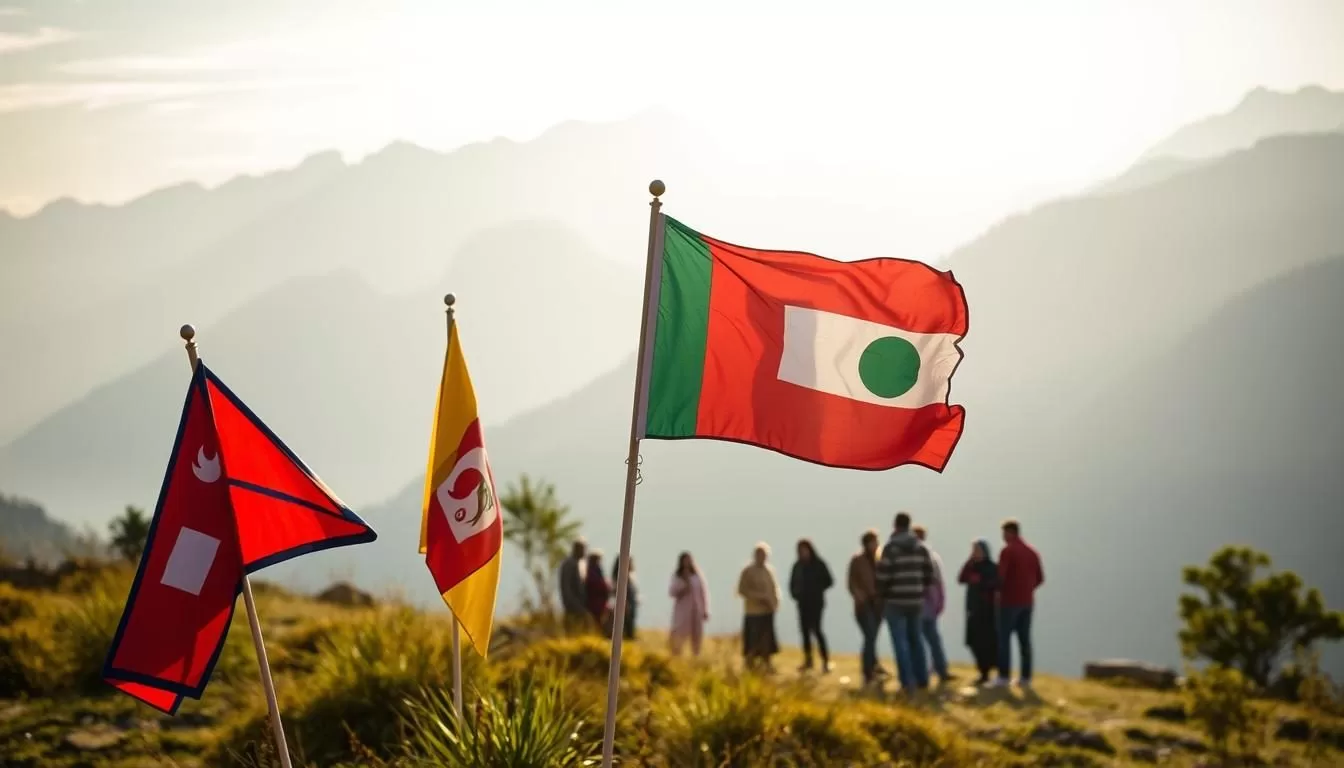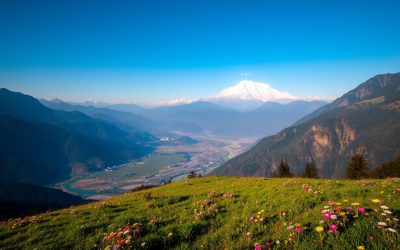✓ Accommodations✓ Flights✓ Rental Cars
You’re about to explore the rich linguistic heritage of Sikkim, a culturally diverse state in northeastern India. As a melting pot of various ethnic groups, Sikkim boasts a unique cultural identity shaped by its history and geography.
The state’s diversity is reflected in its languages, with multiple tongues coexisting harmoniously. You’ll discover the official languages recognized by the Sikkim government, as well as the most widely spoken languages across different regions.
As you delve into this guide, you’ll gain insights into the historical development of languages in Sikkim and how they reflect the state’s unique culture and ethnic diversity. Whether you’re planning to visit or simply curious about linguistic diversity, this comprehensive guide will provide you with valuable information.
The Linguistic Landscape of Sikkim
As you explore Sikkim, you’ll discover a unique linguistic landscape shaped by its geography and history. Modern Sikkim is a multiethnic and multilingual Indian state, with an economy largely dependent on agriculture and tourism.
Geographical and Historical Context
Sikkim’s geographical location and historical background have significantly influenced its linguistic diversity. The state’s position in the Himalayas has made it a crossroads for various cultures and languages. Historically, Sikkim has been a melting pot of different ethnic communities, each contributing to its rich linguistic heritage.
Sikkim’s Multilingual Identity
Sikkim’s identity as a multilingual state is characterized by the coexistence of numerous languages. You’ll find that the state’s population speaks a variety of languages, reflecting its multilingual identity. The demographic breakdown of language speakers in Sikkim shows a significant proportion of the population speaking Nepali, followed by other languages such as Bhutia, Lepcha, and various dialects brought by migrant communities.
- The state’s multilingualism contributes to its cultural richness and social harmony.
- Different ethnic communities in Sikkim maintain their linguistic heritage while participating in broader cultural exchange.
- Sikkim’s linguistic situation is special due to the high level of multilingualism among its residents.
This diversity is a hallmark of Sikkim’s communities and is reflected in its vibrant cultural landscape.
Official Languages of Sikkim
As you explore Sikkim’s linguistic diversity, you’ll find that the state’s official languages are integral to its identity and functionality. Sikkim’s linguistic landscape is shaped by its cultural heritage and historical context.
Constitutional Recognition
Sikkim’s official languages have been recognized and supported through constitutional provisions. The state’s linguistic identity is protected and promoted through various legislative measures. English is widely used in administration and education, serving as a link language that facilitates communication across different linguistic groups. The constitutional recognition of local languages has ensured their preservation and promotion.
The Constitution of India provides the framework for the recognition and support of local languages in Sikkim. This constitutional backing is crucial for the state’s language policies and their implementation.
Language Policy and Implementation
The implementation of language policies in Sikkim involves various mechanisms to promote the use of official languages in administration, education, and media. English is taught in schools and used in government documents, ensuring effective communication across the state. The government supports the use of local languages through various initiatives, balancing the promotion of local languages with the need for effective communication in a diverse linguistic environment.

You’ll find that Sikkim’s approach to language policy is unique, with efforts to address the challenges faced in implementing multilingual policies. The state’s experience can provide valuable insights into managing linguistic diversity.
Nepali: The Most Widely Spoken Language
Nepali is the lingua franca of Sikkim, connecting people across different regions and communities. Its widespread use is a testament to its importance in the daily lives of Sikkim’s inhabitants.
Historical Development in Sikkim
The historical development of Nepali in Sikkim is closely tied to the migration patterns and cultural exchanges that have shaped the parts of the state over centuries. As various groups settled in Sikkim, Nepali emerged as a common language for communication among diverse ethnic and linguistic communities. This historical context has contributed significantly to Nepali becoming the most widely spoken language in the region.
Cultural Significance and Usage
Nepali holds significant cultural importance in Sikkim, being used in various aspects of daily life, including social interactions, cultural events, and local media. The language is known for its phonetic richness, with a wide range of sounds and tones that add depth and complexity to its spoken form. You can experience the vibrant cultural heritage of Sikkim through the use of Nepali in traditional songs, stories, and festivals, which are integral to the identity of the people of Sikkim.
Dialects and Variations
Across different regions of Sikkim, various dialects of Nepali are spoken, each with its unique phonological, lexical, and grammatical variations. Geographical isolation in different parts of Sikkim has contributed to the development of distinct linguistic features. Social factors, including caste, ethnicity, and education, also influence dialectal variations in Nepali. You can observe how these dialects contribute to local identity and cultural expression, enriching the linguistic diversity of Sikkim.
Bhutia (Sikkimese): The Language of the Bhutia Community
As you explore the linguistic diversity of Sikkim, you’ll discover the significance of Bhutia, a language that holds a special place in the hearts of the Bhutia community. Bhutia is one of the official languages of Sikkim, alongside Nepali and Lepcha, underscoring its status in administrative and governmental affairs within the state.
Origins and Historical Context
Bhutia serves as a powerful tool for preserving the cultural identity of the Bhutia people. It allows them to pass down traditions, folklore, and historical narratives from one generation to the next. The language is deeply rooted in the history and culture of the Bhutia community, making it an essential part of their heritage.
Current Usage and Cultural Importance
The Bhutia language continues to play a vital role in the daily lives of the Bhutia communities in Sikkim. It is used in various domains, including cultural festivals and ceremonies, such as Losar (Tibetan New Year) celebrations. The language is not merely a means of communication but a vehicle for transmitting the rich heritage and values of the community.
- The current state of Bhutia language use in Sikkim reveals a dedicated effort to preserve it, with a significant number of speakers and various domains where it’s commonly used.
- Bhutia is crucial in preserving traditional knowledge, religious practices, and artistic expressions of the Bhutia community, highlighting its cultural significance.
- The language embodies the unique worldview and values of its speakers, serving as a repository of cultural wisdom.
Efforts by the Bhutia community to maintain their linguistic heritage in the face of modernization and the increasing dominance of more widely spoken languages are noteworthy. These efforts ensure the continued relevance and importance of Bhutia in Sikkim’s multilingual landscape.
Lepcha: The Indigenous Language
As you explore the linguistic diversity of Sikkim, you’ll discover the rich heritage of the Lepcha language. Lepcha holds the distinction of being one of the official languages of Sikkim, alongside Nepali and Bhutia, reflecting the state’s commitment to preserving its linguistic diversity.
Historical Significance as the Language of Indigenous People
The Lepcha language has been an integral part of the cultural identity of the Lepcha community, who are considered the indigenous people of Sikkim. Historically, Lepcha was not only a means of communication but also a carrier of the community’s traditions, folklore, and cultural practices. The language has a unique script and has been a vital component of Lepcha literature and oral traditions.
Lepcha’s historical significance is further underscored by its recognition as an official language, which highlights the state’s efforts to honor and preserve its indigenous heritage.
Current Status and Preservation Efforts
The current status of the Lepcha language is a subject of interest, with various initiatives underway to promote its use and preservation. Despite being an official language, Lepcha faces challenges as a minority language, with a dwindling number of fluent speakers, especially among the younger generation.
To address these challenges, concerted efforts are being made by the government, educational institutions, and community organizations. These include language revitalization programs, development of Lepcha language materials such as dictionaries and textbooks, and cultural festivals that promote Lepcha culture and language. The inclusion of Lepcha in educational curricula, from primary schools to higher education institutions, is a significant step towards ensuring its survival.
Moreover, the use of digital resources and media to promote Lepcha is becoming increasingly important. By leveraging technology and community engagement, these initiatives aim to raise awareness and encourage the use of Lepcha among new generations, thereby preserving it as a vital part of Sikkim’s linguistic languages heritage.
English in Sikkim: Administrative and Educational Role
As you explore the linguistic landscape of Sikkim, you’ll find that English plays a pivotal role in both administration and education. English is widely used in government documents and is taught in schools, serving various purposes for the people of Sikkim.
Usage in Government and Administration
In Sikkim, English is the primary language used for administrative purposes. It is used in government offices, official documents, and public services. This widespread use of English ensures that the administration is accessible to people from different linguistic backgrounds, both within and outside Sikkim. As a result, it facilitates smoother governance and public interaction.
A key aspect of English in administration is its role in official documentation and communication. For instance, government reports, legal documents, and public notices are typically published in English. This practice not only aids in maintaining clarity and consistency but also caters to the diverse population of Sikkim.
| Administrative Use | Description |
|---|---|
| Government Documents | Reports, policies, and official notices |
| Public Services | Communication with the public, service delivery |
Role in Education and Tourism
English is an integral part of Sikkim’s education system, being a medium of instruction in many schools and universities. This has significant implications for the people of Sikkim, as proficiency in English opens up opportunities for higher education and employment. The use of English in education is part of a broader strategy to equip students with the skills needed for a globalized economy.
In the tourism sector, English plays a crucial role in facilitating communication between locals and tourists. As Sikkim’s economy is largely dependent on tourism, the ability to communicate effectively with visitors from around the world is essential. English proficiency among the local population enhances the overall tourist experience, contributing to the local economy.
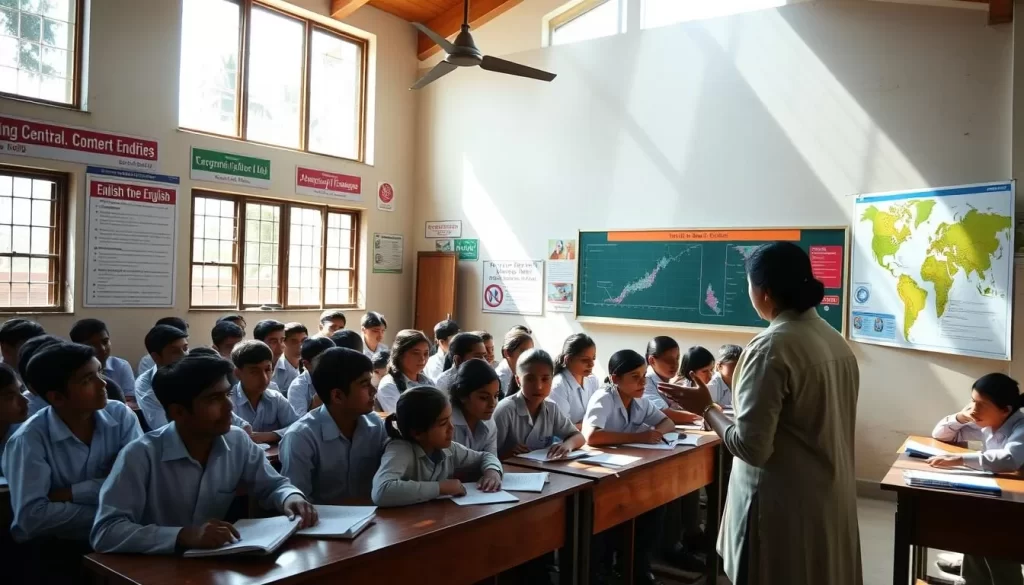
Additional Officially Recognized Languages in Sikkim
Beyond the primary languages, Sikkim acknowledges several other languages that play a crucial role in maintaining the state’s cultural heritage. These languages, while not as widely spoken, are vital to the cultural diversity of the region.
Limbu Language and Its Speakers
The Limbu language is spoken by the Limbu community, one of the indigenous groups in Sikkim. This language is part of the Sino-Tibetan language family and has its own unique script. Efforts are being made to preserve the Limbu language through education and cultural programs.
Rai Language and Cultural Context
The Rai language is another important language in Sikkim, spoken by the Rai community. It is known for its rich oral traditions and cultural significance. The Rai language is being preserved through folk tales, songs, and cultural festivals.
Gurung, Magar, and Sherpa Languages
The Gurung, Magar, and Sherpa languages are also recognized in Sikkim for their cultural importance. Each of these languages has its own distinct characteristics and contributes to the linguistic diversity of the state. Initiatives are being taken to document and preserve these languages.
Mukhia, Newari, and Tamang Languages
The Mukhia, Newari, and Tamang languages are additional languages that have been officially recognized in Sikkim. These languages are integral to the cultural identity of their respective communities. Efforts are being made to promote the use of these languages in daily life and cultural practices.
In conclusion, Sikkim’s linguistic landscape is characterized by a rich diversity of languages, each contributing to the state’s cultural heritage. The recognition of these additional languages underscores the state’s commitment to preserving its multicultural identity.
Language Distribution Across Sikkim’s Regions
The linguistic diversity in Sikkim is a fascinating aspect that varies significantly across its regions. As you explore the different parts of this Indian state, you’ll notice how languages are distributed, reflecting the local culture and history.
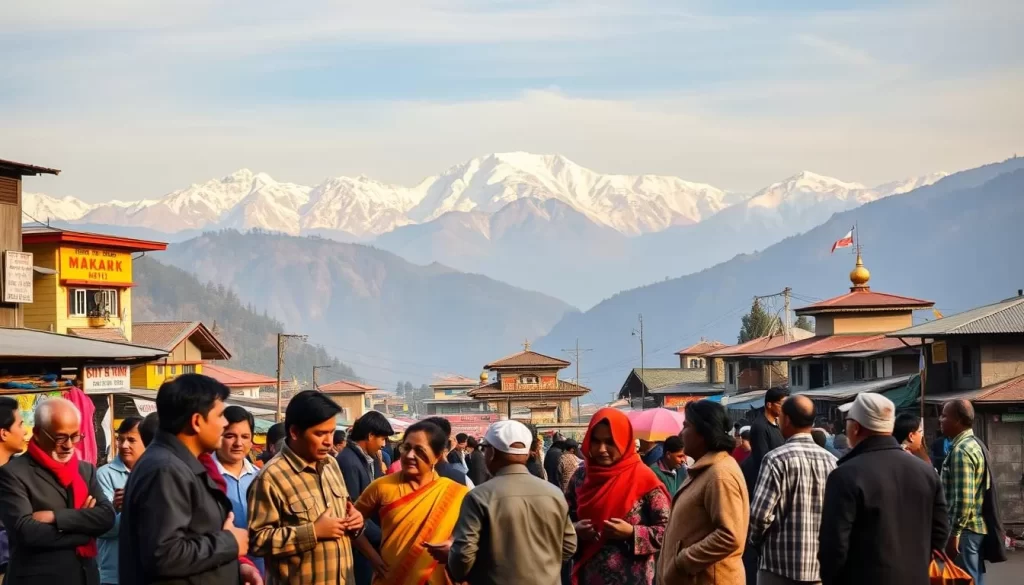
North and East Sikkim Language Patterns
In North and East Sikkim, the language patterns are shaped by the local population‘s historical and cultural contexts. These regions, known for their rugged terrain and significant Buddhist monasteries, have a distinct linguistic identity. The predominant languages here include Bhutia and Tibetan dialects, reflecting the strong Buddhist influence.
The geographical isolation of these areas has contributed to the preservation of traditional languages, making them an integral of the regional identity.
South and West Sikkim Linguistic Diversity
South and West Sikkim exhibit a rich linguistic diversity, with a mix of languages such as Nepali, Limbu, and Lepcha. The regions bordering Nepal have been influenced by Nepali language and culture, particularly in towns like Namchi and Gyalshing.
The linguistic diversity in these regions is a reflection of the historical migration patterns and economic activities. For instance, areas with significant agricultural activities have attracted people from various linguistic backgrounds, contributing to the multilingual nature of the population.
You’ll find that the interaction between different linguistic groups has led to interesting phenomena such as language borrowing and code-switching, enriching the overall cultural landscape.
Languages in Education and Media
As you explore Sikkim’s educational and media landscapes, you’ll discover the pivotal role languages play. Sikkim’s linguistic diversity is a significant part of its identity, influencing both the education system and media platforms.
Medium of Instruction in Schools
In Sikkim’s schools, the medium of instruction varies, reflecting the state’s multilingual culture. While English is widely used, other languages such as Nepali also play a crucial role in education. This diversity in the curriculum helps bridge the gap between different communities, fostering understanding among the people.
The use of multiple languages in education not only preserves linguistic heritage but also enhances the learning experience.
Languages in Local Media and Publications
Sikkim’s media landscape is characterized by a rich linguistic diversity. Newspapers, magazines, radio, and television programs are available in several languages, catering to the state’s diverse population. This multilingual media environment helps in preserving minority languages and promoting cultural understanding.
- Local newspapers and magazines are published in languages such as Nepali, English, and other regional languages.
- Radio and television programs also feature content in multiple languages, making information accessible to a broader audience.
- Digital media and social networks are increasingly playing a vital role in language preservation and promotion.
Language Preservation Initiatives in Sikkim
Language preservation in Sikkim is a multifaceted endeavor that involves both government initiatives and community-led efforts. You’re at the forefront of a vibrant cultural landscape where language is not just a means of communication, but a repository of identity and heritage.
Government Programs and Policies
The government of Sikkim has launched several programs aimed at preserving the state’s linguistic diversity. These include the establishment of language schools and cultural centers where local languages are taught and promoted. For instance, the Sikkim government has implemented policies to include local languages in the school curriculum, ensuring that younger generations can learn and appreciate their linguistic heritage.
| Program | Description | Impact |
|---|---|---|
| Language Schools | Establishment of schools teaching local languages | Increased enrollment in language classes |
| Cultural Centers | Promotion of local cultures and languages | Revitalization of cultural practices |
Community-Led Preservation Efforts
Community-led initiatives are equally crucial in Sikkim’s language preservation landscape. Community organizations, cultural associations, and language activists are driving efforts to document, teach, and promote local languages. You’re witnessing innovative approaches such as intergenerational language transmission programs and community language nests. Digital technologies are also being harnessed to create language learning apps and online resources.
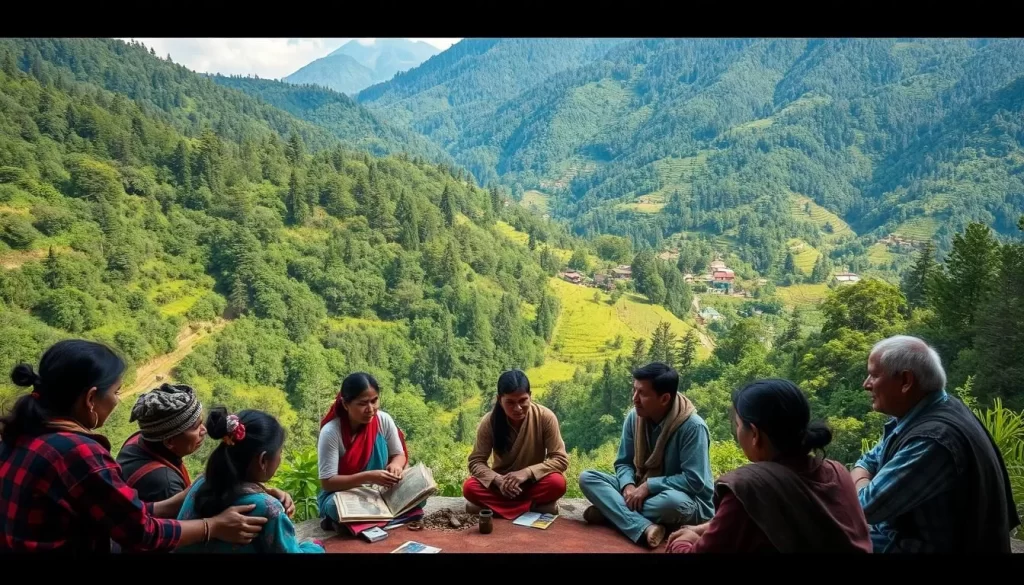
These efforts are driven by the recognition that language is a vital part of people’s identity and culture. By engaging with these initiatives, you’re supporting the preservation of Sikkim’s rich linguistic heritage.
Linguistic Challenges and Future Outlook
With its diverse linguistic heritage, Sikkim is at a crossroads, balancing tradition and modernity. As a multilingual state, Sikkim faces the challenge of preserving its rich linguistic diversity while embracing the influences of modernization and globalization.
Endangered Languages and Dialects
Sikkim is home to several languages and dialects that are considered endangered. The preservation of these languages is crucial for maintaining the state’s cultural identity. Efforts are being made by the government and local communities to document and promote these languages.
A notable example is the Lepcha language, which is indigenous to Sikkim. Initiatives to preserve Lepcha include language documentation projects and cultural programs.
| Language/Dialect | Status | Preservation Efforts |
|---|---|---|
| Lepcha | Endangered | Language documentation, cultural programs |
| Limbu | Vulnerable | Language education, community initiatives |
| Rai | Vulnerable | Community-led language preservation |
Modernization and Language Evolution
Modernization and technological advancements are influencing the languages spoken in Sikkim. New vocabulary and changes in usage patterns are emerging, especially among the younger population. Social media and digital communication are playing a significant role in this evolution.
For instance, the incorporation of English words into local languages is a common phenomenon. This blending of languages reflects the dynamic nature of linguistic identity in Sikkim.
As Sikkim moves forward, it is essential to strike a balance between preserving traditional languages and embracing the changes brought about by modernization. This balance will be crucial in shaping the future linguistic landscape of the state.
Cultural Expression Through Languages in Sikkim
As you explore Sikkim, you’ll discover how its languages play a crucial role in shaping the state’s cultural landscape. The culture of Sikkim is a rich mosaic, with languages being an integral part of its diverse heritage. This diversity is reflected in various forms of cultural expression, including literature, oral traditions, festivals, and ceremonies.
Literature and Oral Traditions
Sikkim’s literary and oral traditions are deeply intertwined with its linguistic diversity. The state’s various language communities have a rich legacy of folklore, myths, and legends passed down through generations. For instance, the Lepcha community has a vibrant oral tradition, with stories and songs that are an integral part of their cultural identity.
The Bhutia community, too, has a significant literary tradition, with texts written in the Bhutia language that are studied and revered. These literary works not only reflect the community’s history and values but also contribute to the broader cultural tapestry of Sikkim.
Festivals and Ceremonies
Festivals and ceremonies are vital aspects of Sikkim’s cultural expression, showcasing the state’s linguistic and cultural diversity. Events like Losar (Tibetan New Year), Dasain (Nepali), and Namsoong (Lepcha) are celebrated with great fervor, highlighting the unique traditions and practices of different language communities.
During these festivals, you can witness the use of various languages in prayers, chants, hymns, and ritual speech, underscoring the significance of linguistic heritage in Sikkim’s cultural practices. The multilingual nature of these celebrations is a testament to the state’s harmonious cultural mosaic.
Conclusion
With its multitude of languages, Sikkim stands out as a uniquely diverse state in India, offering valuable insights into the complex relationship between language and culture. As you’ve explored this article, you’ve gained a comprehensive understanding of Sikkim’s rich linguistic landscape, from its official languages to the many other tongues that contribute to its cultural diversity.
The article has guided you through the historical development, current status, and future challenges of languages in Sikkim, highlighting their importance beyond mere communication. You’ve learned how these languages serve as repositories of cultural knowledge, vehicles for artistic expression, and markers of identity for various communities within the state.
Sikkim’s approach to linguistic diversity, with its recognition of multiple official languages and support for minority languages, offers valuable lessons for multilingual societies worldwide. The state’s commitment to preserving its cultural heritage through language is a testament to the importance of diversity in enriching our lives and fostering a deeper understanding of the world around us.
Whether you’re planning to visit Sikkim, conducting research, or simply interested in linguistic diversity, this guide has provided you with insights into one of India’s most linguistically rich states. As you reflect on the information presented, it’s clear that Sikkim’s languages are not just a means of communication but a vital part of its culture and identity.
The above is subject to change.
Check back often to TRAVEL.COM for the latest travel tips and deals.
